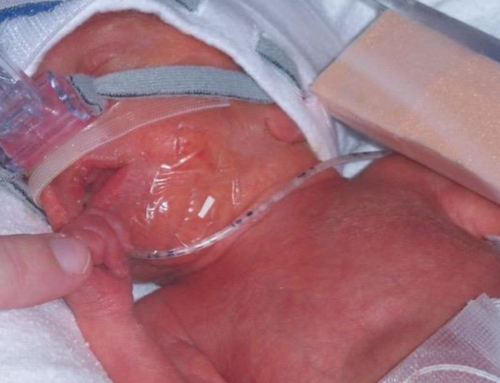
Submitted by: Tom Ngo-Akhien, BHS (Hons), SRT
The COVID-19 pandemic is a major obstacle to global health. Its unforgettable impact is often described as a generation defining moment for the current youth. To lessen the impact of COVID-19, as with any pandemic, policy makers must act on the best information. Essentially, the most prevalent COVID-19 comorbidities must be clarified. A study by Halpin et al. (2020) suggests that chronic respiratory diseases are underrepresented among COVID-19 patients, while diabetes is highly represented. The relationship between comorbidities and COVID-19 may be explained by treatment drugs (corticosteroids and gliptins) (Abdi et al., 2020; Halpin et al., 2020).
It may seem easy to predict relationships between comorbidities and COVID-19. One could predict, for example, chronic obstructive pulmonary disease (COPD) and asthma would increase vulnerability to COVID-19. Halpin and colleagues (2020), however, suggests that these chronic respiratory diseases were underrepresented among those with COVID-19. Only 1.4% of COVID-19 patients had COPD in Wuhan, China, relative to the 4.9% Chinese average (Halpin et al., 2020). The researchers also emphasize that this is not due to underdiagnosis of Chinese chronic respiratory diseases. They defend these findings by showing that Italy and the United States had similar patterns, stating that among the 355 Italian COVID-19 patients that died on March 23, none of them had COPD (Halpin et al., 2020). In the United States, only 8.5% of all COVID-19 patients had a comorbidity related to a chronic respiratory disease (Halpin et al., 2020).
The explanation for this relationship is not clear (Leung et al., 2020). It is unlikely that having a chronic respiratory disease causes a protective immune response to COVID-19 (Leung et al., 2020). Afterall, those with COPD and COVID-19, while lower in number, are more prone to death (Leung et al., 2020). However, inhaled corticosteroids used by COPD patients may decrease viral entry (Leung et al., 2020). Further research is needed before anything can be recommended based on this (Leung et al., 2020).
In terms of the most prevalent comorbidities, there is a high representation of hypertension and diabetes in COVID-19 patients (Sanyaolu et al., 2020). Of the 355 Italian COVID-19 patients that died on March 23, 20.3% had diabetes (Halpin et al., 2020). In New York, U.S.A., the most common comorbidities were hypertension (55.4%) and diabetes (37.3%) (Sanyaolu et al., 2020). Furthermore, Sanyaolu and colleagues (2020) state that the most common comorbidities in China are hypertension (15.8%), cardiovascular and cerebrovascular diseases (11.7%), and diabetes (9.4%); of note is that respiratory diseases (1.4%) were not categorized as cardiovascular/cerebrovascular (Sanyaolu et al., 2020).
Abdi et al. (2020) suggest that the relationship between diabetes and COVID-19 could be due to anti-diabetic drugs (gliptins) (Abdi et al., 2020). Gliptins block Dipeptidyl Peptidase IV (DPP4) activity, increasing insulin and lowering blood glucose (Abdi et al., 2020). However, DPP4 also plays a role in the immune response; this ultimately reduces macrophage function, leading to the increased rates of COVID-19 (Abdi et al., 2020). Hyperglycemia (high blood sugar) can also cause ineffective immune responses and can worsen COVID-19 outcomes even among non-diabetics (Ceriello, 2020).
It is of utmost importance to understand the effects of COVID-19 on people with underlying health conditions. COVID-19 is overwhelming much of the respiratory practice arena and resources must be focused wisely (Phua et al., 2020). The increased COVID-19 infection rates in diabetic patients as noted by Halpin et al. (2020) is a good indicator of where respiratory resources should go. Otherwise, many could go without the necessary care service that they need (Abdi et al., 2020).
References
Abdi, Alireza, Milad Jalilian, Pegah Ahmadi Sarbarzeh, and Zeljko Vlaisavljevic. (2020).
Diabetes and COVID-19: A Systematic Review on the current evidences. Diabetes Research And Clinical Practice 166: 108347. doi:10.1016/j.diabres.2020.108347.
Ceriello, A. (2020). Hyperglycemia and COVID-19: What was known and what is really new?
Diabetes Research And Clinical Practice 167: 108383. doi:10.1016/j.diabres.2020.108383.
Halpin, D.M.G., Faner, R., Oriol, S. Badia, J.R. and Agusti, A. (2020).
Do chronic respiratory diseases or their treatment affect the risk of SARS-Cov-2 infection? The Lancet Respiratory Medicine 8 (5): 436-438. doi:10.1016/s2213-2600(20)30167-3.
Leung, J.M., Masahiro, N., Wei, C., Yang, T., Sin, D.D. (2020).
COVID-19 and COPD. European Respiratory Journal 56 (2): 2002108. doi:10.1183/13993003.02108-2020.
Phua, J., Li, W., Lowell, L., Moritoki, E., Lim, C-M, Divatia, J.V., and Shrestha, B.R., et al. (2020).
Intensive care management Of Coronavirus Disease 2019 (COVID-19): Challenges And recommendations. The Lancet Respiratory Medicine 8 (5): 506-517. doi:10.1016/s2213-2600(20)30161-2.
Sanyaolu, A., Chuku, O., Marinkovic, A., Patidar, R., Younis, K., Desai, P., Hosein, Z., Padda, I., Mangat, J., and Altaf, M. (2020).
Comorbidity and its impact on patients with COVID-19. SN Comprehensive Clinical Medicine 2 (8): 1069-1076. doi:10.1007/s42399-020-00363-4.
[printfriendly]





